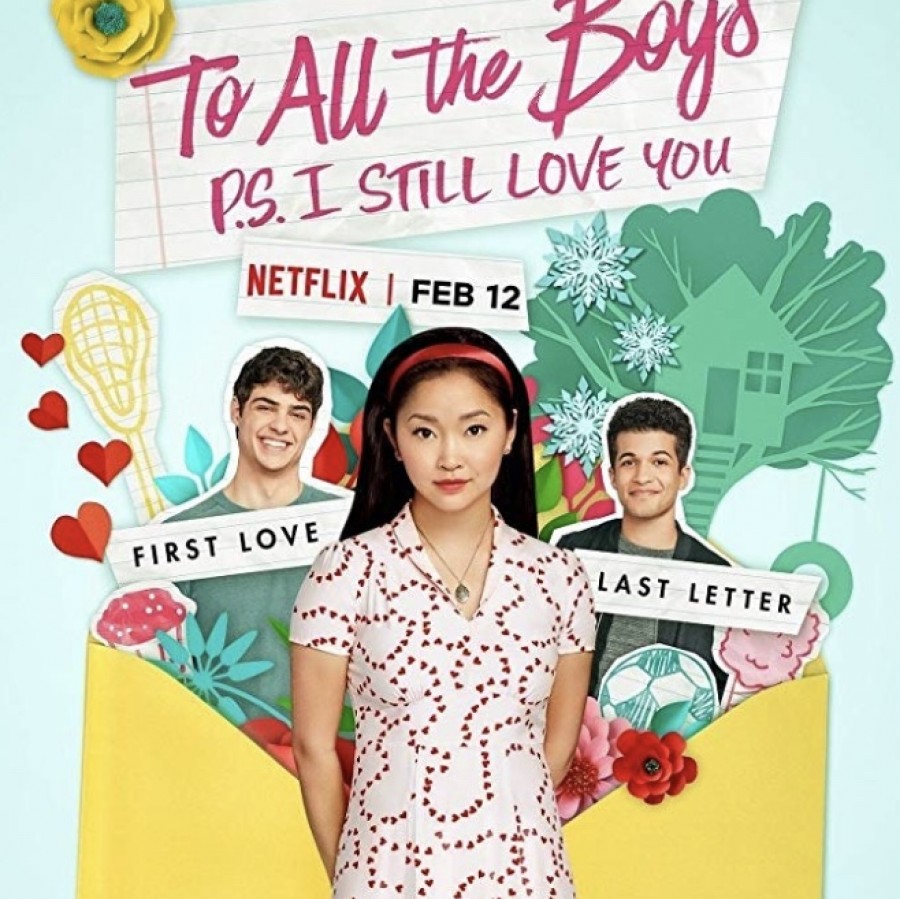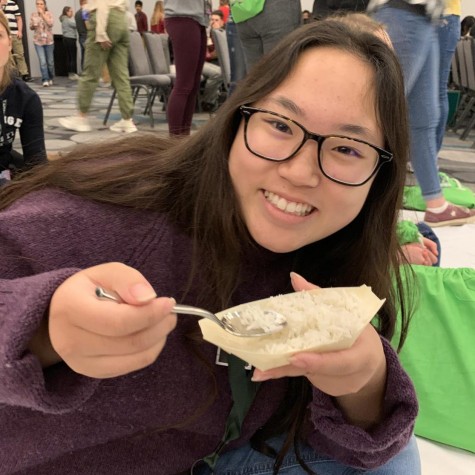Unexpected reunions with childhood friends are usually a pleasant surprise, but for Lara Jean Covey in “To All the Boys: P.S. I Still Love You,” her encounter is the last thing she needs.
Just in time for Valentine’s day, Netflix released “To All the Boys: P.S. I Still Love You,” the long-awaited sequel to the teen romantic comedy “To All the Boys I’ve Loved Before.” But the movie’s feeble attempt at adding drama undermines the picturesque romance developed by the end of the first movie. This deterioration of romance reflects a broader shift in romantic standards–a sign that the new wave of teen romance catered to Gen-Z has arrived.
While “To All the Boys I’ve Loved Before” introduces main characters Lara Jean and Peter Kavisnky’s romantic endeavors as a consequence of her unintentionally released love letters, the sequel unravels the complications that arise when another boy responds to her letter: John Ambrose McClaren.
John Ambrose McClaren is depicted as a sensitive foil to Peter’s more impulsive persona. He is the exact boy that people expect Lara Jean to date: thoughtful, shy, and withdrawn. Peter, on the other hand, is boisterous, bold, and often the center of attention.
Undermining the stability in the fresh relationship between Lara Jean and Peter, the movie entertains the idea of John Ambrose as Lara Jean’s ideal complement, featuring reminiscent childhood flashbacks, longing glances exchanged during their prolonged hours together and even a tender moment tucked away in a tree house.
throughout the entire course of the movie, the possibility of John Ambrose replacing Peter is haphazardly dismissed at the end. Naturally, Peter Kavinsky wins over Lara Jean’s heart.
However, Lara Jean’s illogical decision is more than a lapse in judgement; instead, it stems from a larger pattern in the current generation of teenagers, which the movie seamlessly manages to depict.
When Lara Jean casts aside John Ambrose, she does so in order to pursue Peter fully. She overlooks the sensitive boy who earnestly responds to her handwritten love letter with one of his own that both marvels at her emotional capacity and expresses his surprise at his own desirability. Instead, she chooses Peter, who despite not being able to summon the creativity to compose an original poem for her nor being perceptive enough to cater to her complex emotional state, represents the idealized romance she has yearned for her entire life.
An avid consumer of romance novels, Lara Jean cannot deny the appeal of a boyish contender who reserves his soft side for her and employs textbook romantic tactics on her. In the age of social media, there seems to be a standard for everything, with no exception to romance. Social media accounts and tags featuring relationship goals or related terms fuel young people’s desire to partake in what everyone seems to be enjoying.
Peter’s merit can be summarized when Lara Jean’s apathetic teenage family friend finally acknowledges her as cool only once she discovers Lara Jean is dating Peter. Lara Jean doesn’t think that she is settling when she chooses Peter. She thinks she has found her dream boy; he takes her out to fancy restaurants, he kisses her in public and most importantly, he claims to put her first.
Another characteristic of this generation is the yearning to be prioritized. Whether a result of rising individualism, an epidemic of loneliness and insecurity, or simply the human need for validation, teens of Gen-Z want little more than to simply be put first. Lara Jean struggles with this when dating Peter, but she latches on to the first boy who shows interest in her. Her feelings for him are cemented when he declares his single-minded love for her at the end of the movie.
The movie goes beyond the specificity of Gen-Z teens as many scenes and much of the ambiance are relevant to the teen experience overall, transcending exclusive generational ties. One prominent scene takes place in Peter’s car as he and Lara Jean are on their way to their first ever real date. The car ride is quiet, yet the jittery energy is palpable through the screen. Though slightly awkward and lacking chemistry, the energy in the car is endearing in its accuracy to teen relationships, a territory filled with first-times and unexplored boundaries.
In one scene, Lara Jean and Gen, the primary antagonist in the movie series as Peter’s vindictive ex-girlfriend, bond in their childhood tree house as they reconcile. The moment is raw and does justice to the teenage experience — both girls tread carefully as they sit a few feet apart and open up to each other without making eye contact.
Throughout the movie, an expertly chosen soundtrack enhances the tone of each scene, either conveying Lara Jean’s feelings, like her giddiness while “Then He Kissed Me” plays as she prepares for her first date with Peter or the heartbreaking “Moral of the Story” in the background as Lara Jean is still reeling from her breakup with Peter.
Although the premise of the movie is questionable and the actual romantic aspect falls flat, “To All the Boys: P.S. I Love You” serves as a genuine testament to the pitfalls and perfection found when pursuing a Gen-Z teen romance. Slipped in throughout, the movie features complex characters who deserve a second look and a handful of authentic moments that portray the teenage experience perfectly.









